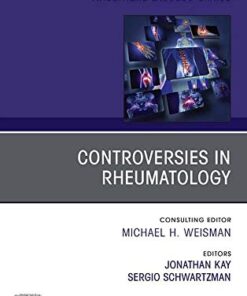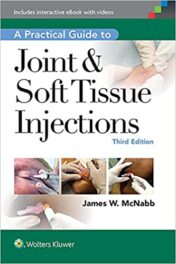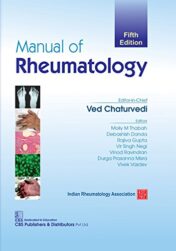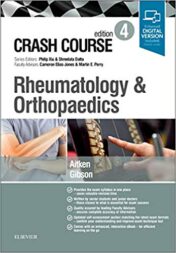- 672 pages
- Publisher: Elsevier; 4 edition (July 10, 2015)
- Language: English
- Type : PDF
-
-
Note : We will send ebook download link after confirmation of payment via paypal success
- Payment methods: Visa or master card (Paypal)
-
Grieve’s Modern Musculoskeletal Physiotherapy, 4th Edition
$15
- The only textbook which covers the breadth of musculoskeletal physiotherapy practice, bringing together the work and opinions of leading international experts
- Presents the latest science, research evidence and clinical practices for assessment and management of spinal and extremity disorders
- Uses contemporary knowledge in diagnostics and future directions to demonstrate how to manage both acute and chronic musculoskeletal pain
- Considers important aspects underpinning clinical practice across the biopsychosocial domains
-
- Now covers the musculoskeletal systems of the upper and lower limbs as well as the spine
- Title, topics, prominent editors and authors – all reflect the evolution in knowledge, models of diagnosis and contemporary practice
- Overviews of the latest advances in:
- the basic sciences relevant to musculoskeletal physiotherapy
- clinical science and practice
- imaging and measurement techniques
- Over 300 illustrations
- Colour plate section
Since the third edition of Grieve’s Modern Manual Therapy was published in 2005, the original concepts of manipulative therapy have grown to embrace new research-generated knowledge. Expansions in practice have adopted new evidence which include consideration of psychological or social moderators. The original manual therapy or manipulative therapy approaches have transformed into musculoskeletal physiotherapy and this is recognized by the change in title for the new edition – Grieve’s Modern Musculoskeletal Physiotherapy.
Grieve’s Modern Musculoskeletal Physiotherapy continues to bring together the latest state-of-the-art research, from both clinical practice and the related basic sciences, which is most relevant to practitioners. The topics addressed and the contributing authors reflect the best and most clinically relevant contemporary work within the field of musculoskeletal physiotherapy.
With this as its foundation and a new six-strong editorial team at its helm, the fourth edition now expands its focus from the vertebral column to the entire musculoskeletal system. For the first time both the spine and extremities are covered, capturing the key advances in science and practices relevant to musculoskeletal physiotherapy.
The book is divided into five parts containing multiple sections and chapters. The first part looks at advances in the sciences underpinning musculoskeletal physiotherapy practice. Here there is commentary on topics such as movement, the interaction between pain and motor control as well as neuromuscular adaptations to exercise. Applied anatomical structure is covered in addition to the challenges of lifestyle and ageing. A new section highlights the important area of measurement and presents the scope of current and emerging measurements for investigating central and peripheral aspects relating to pain, function and morphological change. Another section discusses some contemporary research approaches such as quantitative and qualitative methods as well as translational research.
Part III contains sections on the principles of and broader aspects of management which are applicable to musculoskeletal disorders of both the spine and periphery. Topics include models for management prescription, communication and pain management and contemporary principles of management for the articular, nervous and sensorimotor systems. In recognition of the patient centred and inclusive nature of contemporary musculoskeletal practice, there is also discussion about how physiotherapists may use cognitive behavioural therapies when treating people with chronic musculoskeletal disorders.
The final part of the book focuses on selected contemporary issues in clinical practice for a particular region, condition or the most topical approaches to the diagnosis and management of a region. A critical review of the evidence (or developing evidence) for approaches is given and areas for future work are highlighted.
Product Details
Related Products
MUSCULOSKELETAL MEDICINE & RHEUMATOLOGY BOOKS
MUSCULOSKELETAL MEDICINE & RHEUMATOLOGY BOOKS
MUSCULOSKELETAL MEDICINE & RHEUMATOLOGY BOOKS
MUSCULOSKELETAL MEDICINE & RHEUMATOLOGY BOOKS
MUSCULOSKELETAL MEDICINE & RHEUMATOLOGY BOOKS
MUSCULOSKELETAL MEDICINE & RHEUMATOLOGY BOOKS
MUSCULOSKELETAL MEDICINE & RHEUMATOLOGY BOOKS
MUSCULOSKELETAL MEDICINE & RHEUMATOLOGY BOOKS
MUSCULOSKELETAL MEDICINE & RHEUMATOLOGY BOOKS
MUSCULOSKELETAL MEDICINE & RHEUMATOLOGY BOOKS
MUSCULOSKELETAL MEDICINE & RHEUMATOLOGY BOOKS
MUSCULOSKELETAL MEDICINE & RHEUMATOLOGY BOOKS
Firestein y Kelley. Tratado de reumatología,11 edición, 2 Volume Set (Original PDF from Publisher)
MUSCULOSKELETAL MEDICINE & RHEUMATOLOGY BOOKS
Manual of Lab Investigations in Rheumatic Diseases (Original PDF from Publisher)
MUSCULOSKELETAL MEDICINE & RHEUMATOLOGY BOOKS
MUSCULOSKELETAL MEDICINE & RHEUMATOLOGY BOOKS
MUSCULOSKELETAL MEDICINE & RHEUMATOLOGY BOOKS
MUSCULOSKELETAL MEDICINE & RHEUMATOLOGY BOOKS
MUSCULOSKELETAL MEDICINE & RHEUMATOLOGY BOOKS
MUSCULOSKELETAL MEDICINE & RHEUMATOLOGY BOOKS
MUSCULOSKELETAL MEDICINE & RHEUMATOLOGY BOOKS
Clinical Innovation in Rheumatology: Past, Present, and Future 2022 Original PDF
MUSCULOSKELETAL MEDICINE & RHEUMATOLOGY BOOKS
A Clinician’s Pearls & Myths in Rheumatology 2016 Original PDF
MUSCULOSKELETAL MEDICINE & RHEUMATOLOGY BOOKS
Synovial Fluid Analysis and The Evaluation of Patients With Arthritis 2022 Original pdf
MUSCULOSKELETAL MEDICINE & RHEUMATOLOGY BOOKS
MUSCULOSKELETAL MEDICINE & RHEUMATOLOGY BOOKS
Multimodal Management of Upper and Lower Extremity Lymphedema 2022 Original pdf+videos
MUSCULOSKELETAL MEDICINE & RHEUMATOLOGY BOOKS
Handbook of Biologics for Rheumatological Disorders 2022 Original PDF
MUSCULOSKELETAL MEDICINE & RHEUMATOLOGY BOOKS
MUSCULOSKELETAL MEDICINE & RHEUMATOLOGY BOOKS
Firestein y Kelley. Tratado de reumatología (Spanish Edition) 2022 True PDF
MUSCULOSKELETAL MEDICINE & RHEUMATOLOGY BOOKS
Riabilitazione integrata patologie reumatiche. Approccio integrato 2016 EPUB & converted pdf
MUSCULOSKELETAL MEDICINE & RHEUMATOLOGY BOOKS
MUSCULOSKELETAL MEDICINE & RHEUMATOLOGY BOOKS
MUSCULOSKELETAL MEDICINE & RHEUMATOLOGY BOOKS
MUSCULOSKELETAL MEDICINE & RHEUMATOLOGY BOOKS
Rheumatology for Primary Care Providers: A Clinical Casebook (Casebooks Series) 2022 43Original PDF
MUSCULOSKELETAL MEDICINE & RHEUMATOLOGY BOOKS
Annals of the Rheumatic Diseases 2021 Full Archives True PDF
MUSCULOSKELETAL MEDICINE & RHEUMATOLOGY BOOKS
MUSCULOSKELETAL MEDICINE & RHEUMATOLOGY BOOKS
MUSCULOSKELETAL MEDICINE & RHEUMATOLOGY BOOKS
Osteoporosis Treatment A Clinical Overview 2021 Original pdf
MUSCULOSKELETAL MEDICINE & RHEUMATOLOGY BOOKS
Ultrasound in Rheumatology A Practical Guide for Diagnosis 2021 Original pdf
MUSCULOSKELETAL MEDICINE & RHEUMATOLOGY BOOKS
Rheumatic Disease in Geriatrics Diagnosis and Management 2020 Original pdf
MUSCULOSKELETAL MEDICINE & RHEUMATOLOGY BOOKS
OPLL Ossification of the Posterior Longitudinal Ligament 2020 Original pdf
MUSCULOSKELETAL MEDICINE & RHEUMATOLOGY BOOKS
PET/CT for Inflammatory Diseases Basic Sciences, Typical Cases, and Review 2020 Original pdf
MUSCULOSKELETAL MEDICINE & RHEUMATOLOGY BOOKS
Comprehensive Treatment of Knee Osteoarthritis Recent Advances 2020 Original pdf
MUSCULOSKELETAL MEDICINE & RHEUMATOLOGY BOOKS
MUSCULOSKELETAL MEDICINE & RHEUMATOLOGY BOOKS
MRI of the Rheumatic Spine A Case-Based Atlas 2020 Original pdf
MUSCULOSKELETAL MEDICINE & RHEUMATOLOGY BOOKS
MUSCULOSKELETAL MEDICINE & RHEUMATOLOGY BOOKS
Sarcopenia Research and Clinical Implications 2021 Original pdf
MUSCULOSKELETAL MEDICINE & RHEUMATOLOGY BOOKS
Nursing Older People with Arthritis and other Rheumatological Conditions 2020 Original pdf
MUSCULOSKELETAL MEDICINE & RHEUMATOLOGY BOOKS
A Case-Based Guide to Neuromuscular Pathology 2020 ORIGINAL PDF
MUSCULOSKELETAL MEDICINE & RHEUMATOLOGY BOOKS
Precision Anticoagulation Medicine A Practical Guide 2020 ORIGINAL PDF
MUSCULOSKELETAL MEDICINE & RHEUMATOLOGY BOOKS
MUSCULOSKELETAL MEDICINE & RHEUMATOLOGY BOOKS
MUSCULOSKELETAL MEDICINE & RHEUMATOLOGY BOOKS
MUSCULOSKELETAL MEDICINE & RHEUMATOLOGY BOOKS
MUSCULOSKELETAL MEDICINE & RHEUMATOLOGY BOOKS
The Washington Manual Rheumatology Subspecialty Consult, 3rd Edition Original PDF 2020
MUSCULOSKELETAL MEDICINE & RHEUMATOLOGY BOOKS
MUSCULOSKELETAL MEDICINE & RHEUMATOLOGY BOOKS
The Pediatric Foot and Ankle: Diagnosis and Management (Original PDF)
MUSCULOSKELETAL MEDICINE & RHEUMATOLOGY BOOKS
MUSCULOSKELETAL MEDICINE & RHEUMATOLOGY BOOKS
A Practical Guide to Joint & Soft Tissue Injection, 4th edition ePub3+Converted PDF 2021
MUSCULOSKELETAL MEDICINE & RHEUMATOLOGY BOOKS
Textbook of Pediatric Rheumatology, 8th edition (Original PDF)
MUSCULOSKELETAL MEDICINE & RHEUMATOLOGY BOOKS
MUSCULOSKELETAL MEDICINE & RHEUMATOLOGY BOOKS
MUSCULOSKELETAL MEDICINE & RHEUMATOLOGY BOOKS
Current Diagnosis & Treatment in Rheumatology, Fourth Edition (Original PDF)
MUSCULOSKELETAL MEDICINE & RHEUMATOLOGY BOOKS
MUSCULOSKELETAL MEDICINE & RHEUMATOLOGY BOOKS
MUSCULOSKELETAL MEDICINE & RHEUMATOLOGY BOOKS
MUSCULOSKELETAL MEDICINE & RHEUMATOLOGY BOOKS
MUSCULOSKELETAL MEDICINE & RHEUMATOLOGY BOOKS
Management of Bone Disease and Kidney Failure in Multiple Myeloma: A Pocket Guide (Original PDF)
MUSCULOSKELETAL MEDICINE & RHEUMATOLOGY BOOKS
MUSCULOSKELETAL MEDICINE & RHEUMATOLOGY BOOKS
MUSCULOSKELETAL MEDICINE & RHEUMATOLOGY BOOKS
MUSCULOSKELETAL MEDICINE & RHEUMATOLOGY BOOKS
MUSCULOSKELETAL MEDICINE & RHEUMATOLOGY BOOKS
MUSCULOSKELETAL MEDICINE & RHEUMATOLOGY BOOKS
MUSCULOSKELETAL MEDICINE & RHEUMATOLOGY BOOKS
Oxford Textbook of Rheumatology (Oxford Textbook Series), 4th Edition (Updated chapters – May 2019)
MUSCULOSKELETAL MEDICINE & RHEUMATOLOGY BOOKS
MUSCULOSKELETAL MEDICINE & RHEUMATOLOGY BOOKS
MUSCULOSKELETAL MEDICINE & RHEUMATOLOGY BOOKS
Rheumatology Entrance MCQ – NEET SS, NEET PG, JIPMER, DM Entrance (PDF)
MUSCULOSKELETAL MEDICINE & RHEUMATOLOGY BOOKS
MUSCULOSKELETAL MEDICINE & RHEUMATOLOGY BOOKS
MUSCULOSKELETAL MEDICINE & RHEUMATOLOGY BOOKS
MUSCULOSKELETAL MEDICINE & RHEUMATOLOGY BOOKS
Textbook of Pediatric Rheumatology, 8th Edition (True PDF + ToC+ Index)
MUSCULOSKELETAL MEDICINE & RHEUMATOLOGY BOOKS
Atlas of Ulcers in Systemic Sclerosis: Diagnosis and Management
MUSCULOSKELETAL MEDICINE & RHEUMATOLOGY BOOKS
Crash Course Rheumatology and Orthopaedics, 4e (ORIGINAL PDF)
MUSCULOSKELETAL MEDICINE & RHEUMATOLOGY BOOKS
MUSCULOSKELETAL MEDICINE & RHEUMATOLOGY BOOKS
MUSCULOSKELETAL MEDICINE & RHEUMATOLOGY BOOKS
Firestein & Kelley’s Textbook of Rheumatology, 2-Volume Set, 11th Edition (Original PDF)
MUSCULOSKELETAL MEDICINE & RHEUMATOLOGY BOOKS
MUSCULOSKELETAL MEDICINE & RHEUMATOLOGY BOOKS
MUSCULOSKELETAL MEDICINE & RHEUMATOLOGY BOOKS
MUSCULOSKELETAL MEDICINE & RHEUMATOLOGY BOOKS
MUSCULOSKELETAL MEDICINE & RHEUMATOLOGY BOOKS
Oxford Textbook of Psoriatic Arthritis (Oxford Textbooks in Rheumatology) (PDF)
MUSCULOSKELETAL MEDICINE & RHEUMATOLOGY BOOKS
MUSCULOSKELETAL MEDICINE & RHEUMATOLOGY BOOKS
MUSCULOSKELETAL MEDICINE & RHEUMATOLOGY BOOKS
MUSCULOSKELETAL MEDICINE & RHEUMATOLOGY BOOKS
Multiple Sclerosis: Tips and Strategies for Making Life Easier, Third Edition (PDF)
MUSCULOSKELETAL MEDICINE & RHEUMATOLOGY BOOKS
Paediatric Rheumatology (Oxford Specialist Handbooks in Paediatrics) (PDF)
MUSCULOSKELETAL MEDICINE & RHEUMATOLOGY BOOKS
MUSCULOSKELETAL MEDICINE & RHEUMATOLOGY BOOKS







































































































